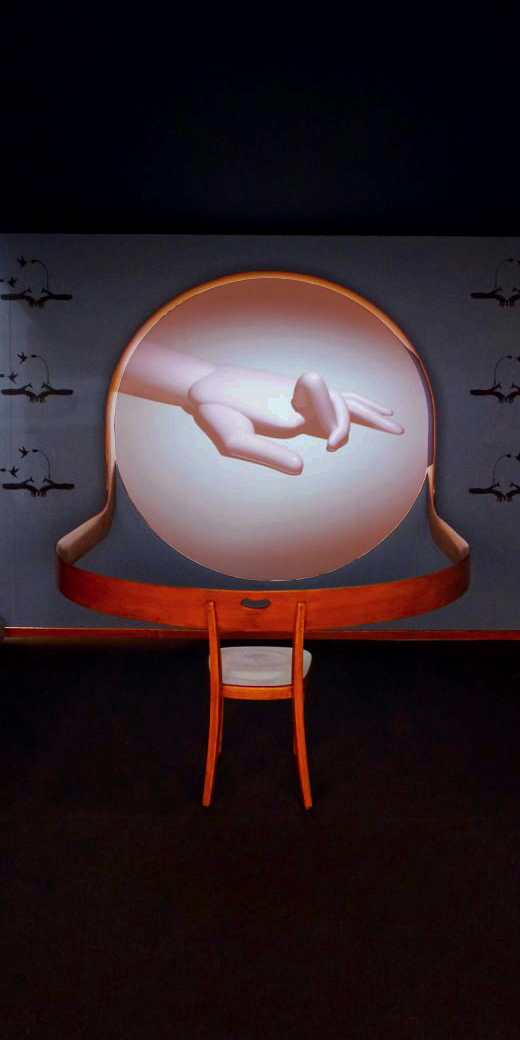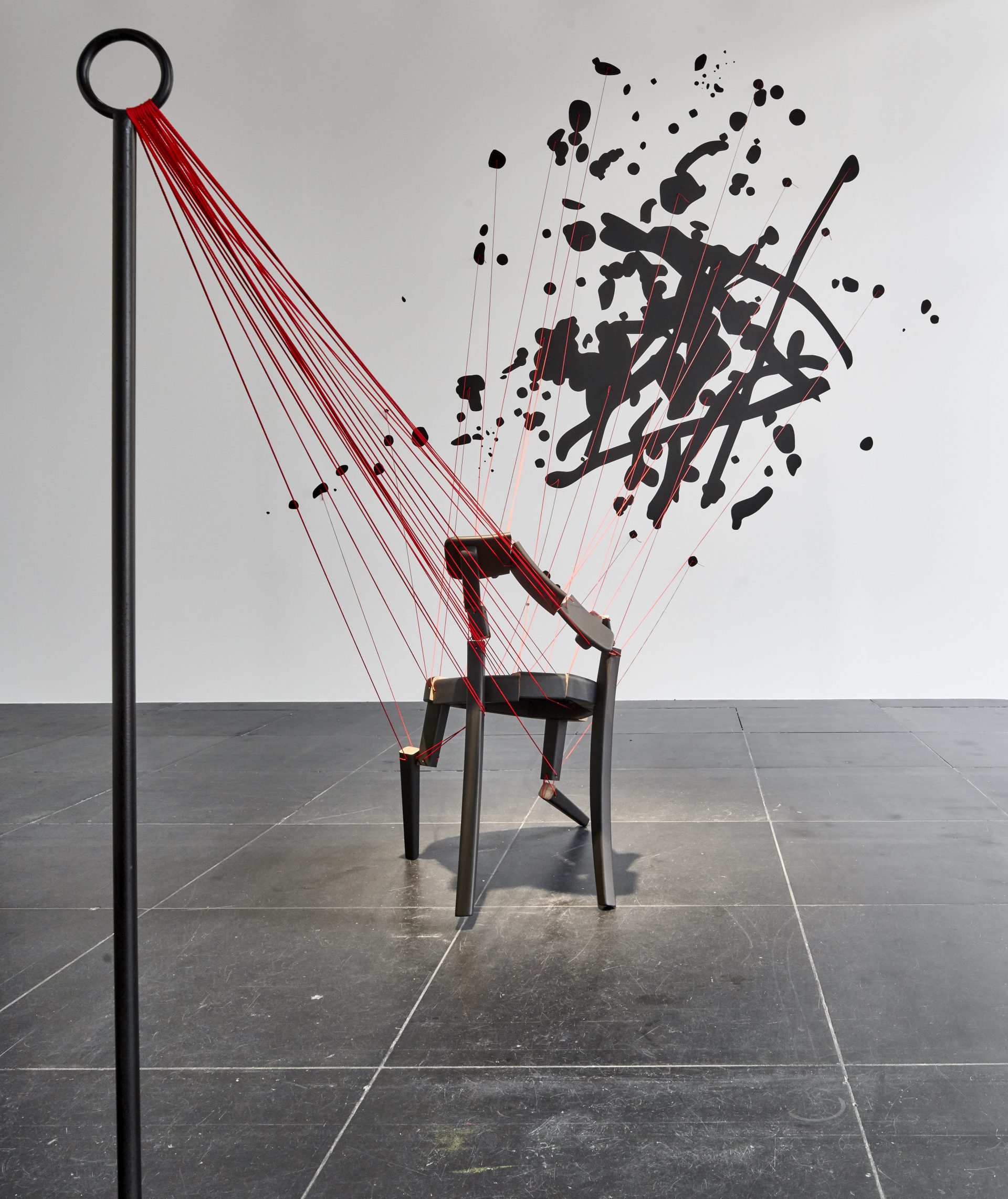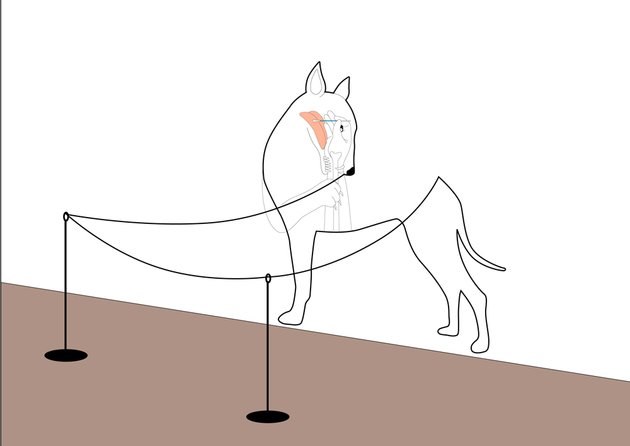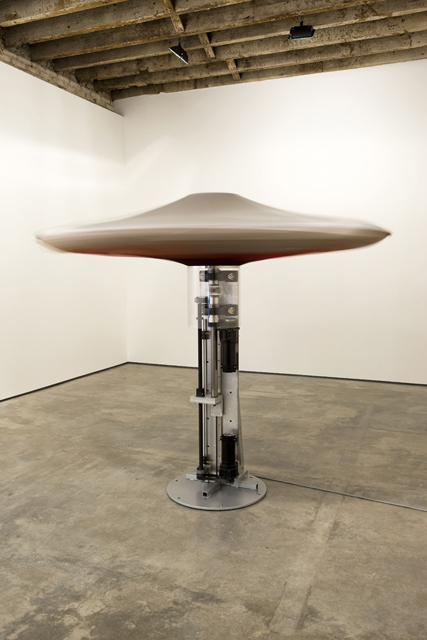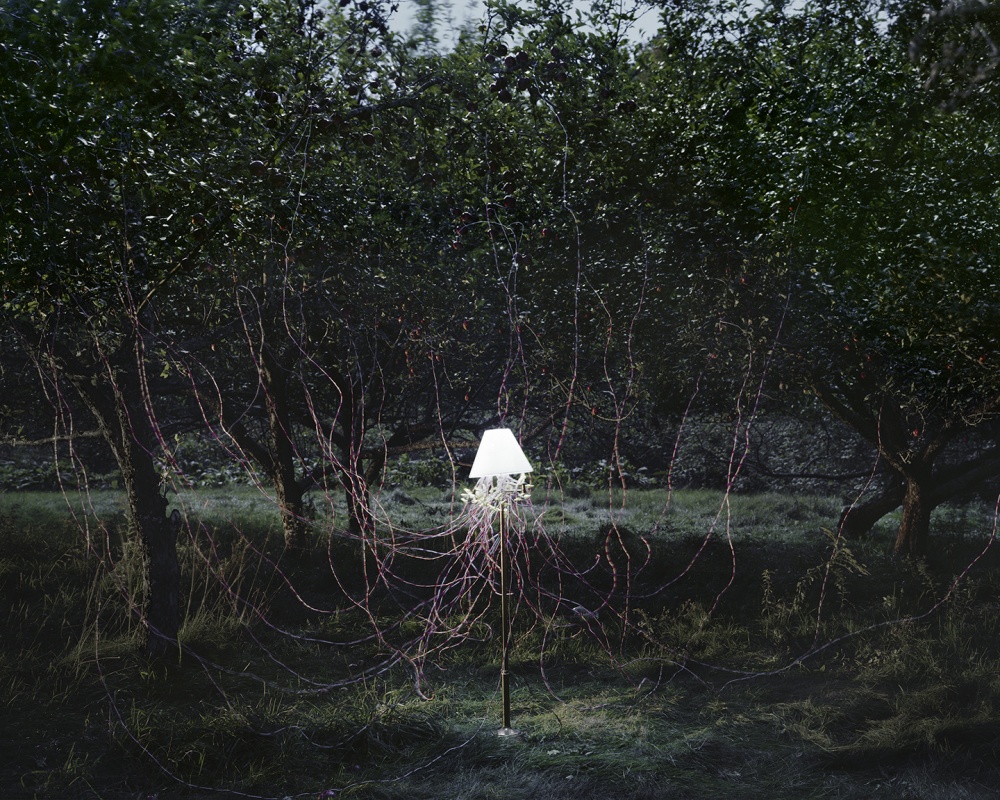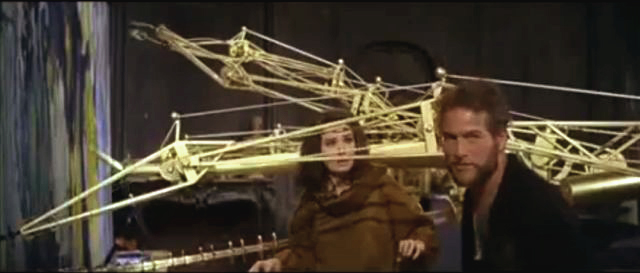
Yves Netzhammer
Gravitatorische Behauptungen
Aus der transdisziplinären Zusammenarbeit ist die Idee einer ephemeren Installation hervorgegangen, der die Linie als Basiselement zugrunde liegt. In einer Live-Performance kann im Laufe der Ausstellung beobachtet werden, wie künstlerische Inspiration und physikalische Kräfte aufeinandertreffen – und Roboter vom Werkzeug zur «(mit)kreierenden» Maschine mutieren. Künstliche Intelligenzen drängen immer stärker in die unterschiedlichsten Bereiche unseres Lebens. Viele Fragen drehen sich dabei um die Menschlichkeit von Robotern. Was passiert, wenn man die Maschine weiterdenken und weiterführen lässt, was der Mensch initiiert hat? Auch in der Kunst ist die Thematik relevant: Wie lassen sich Roboter in die künstlerische Produktion einbeziehen? Wer oder was bestimmt die Form? Wie geht man um mit der Ungewissheit über die eigentliche Autorschaft? Seit deren Anfang ist der Einsatz von Maschinen in den künstlerischen Prozess zwar einbezogen, ihr Anteil daran jedoch immer wieder auch hinterfragt worden.


